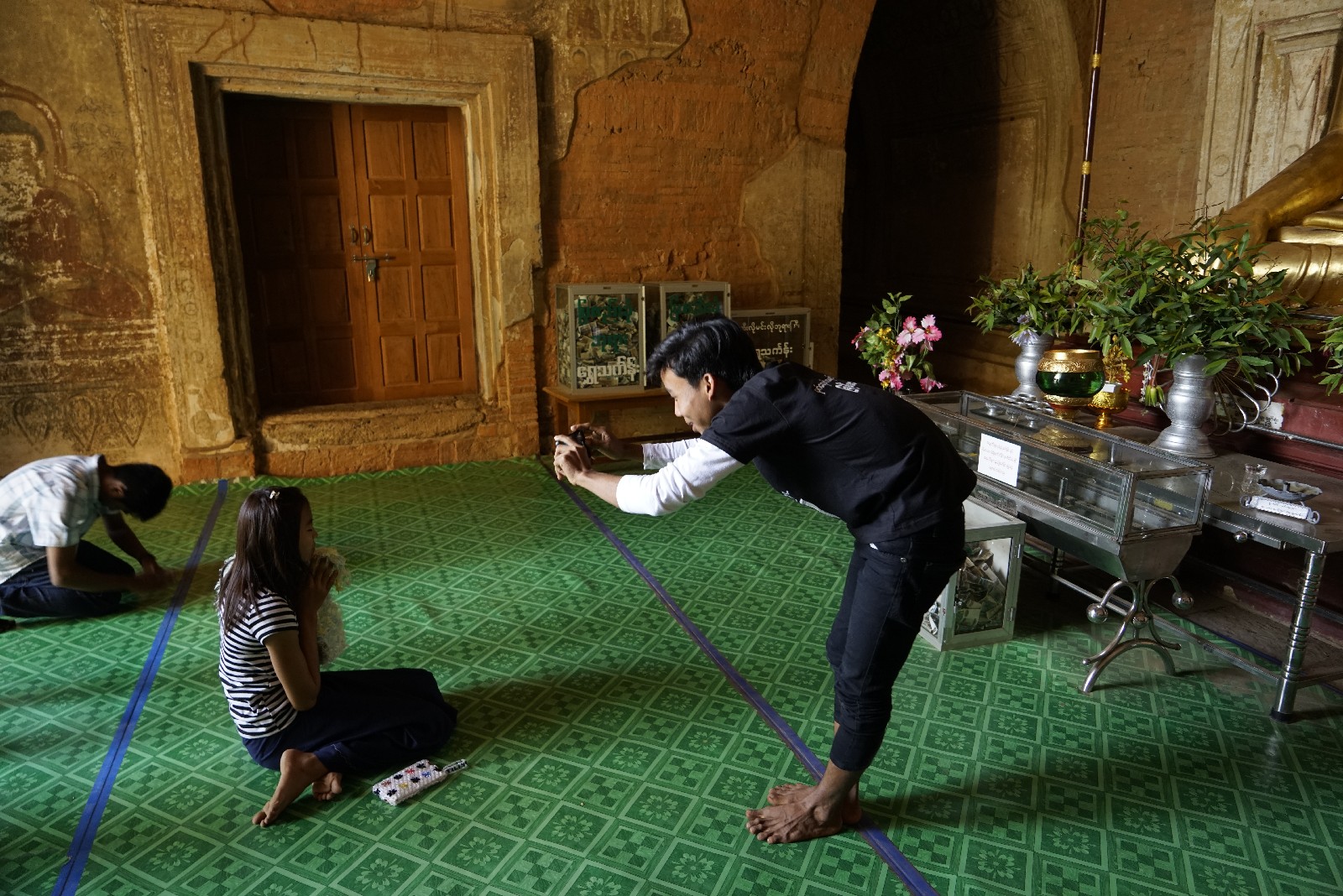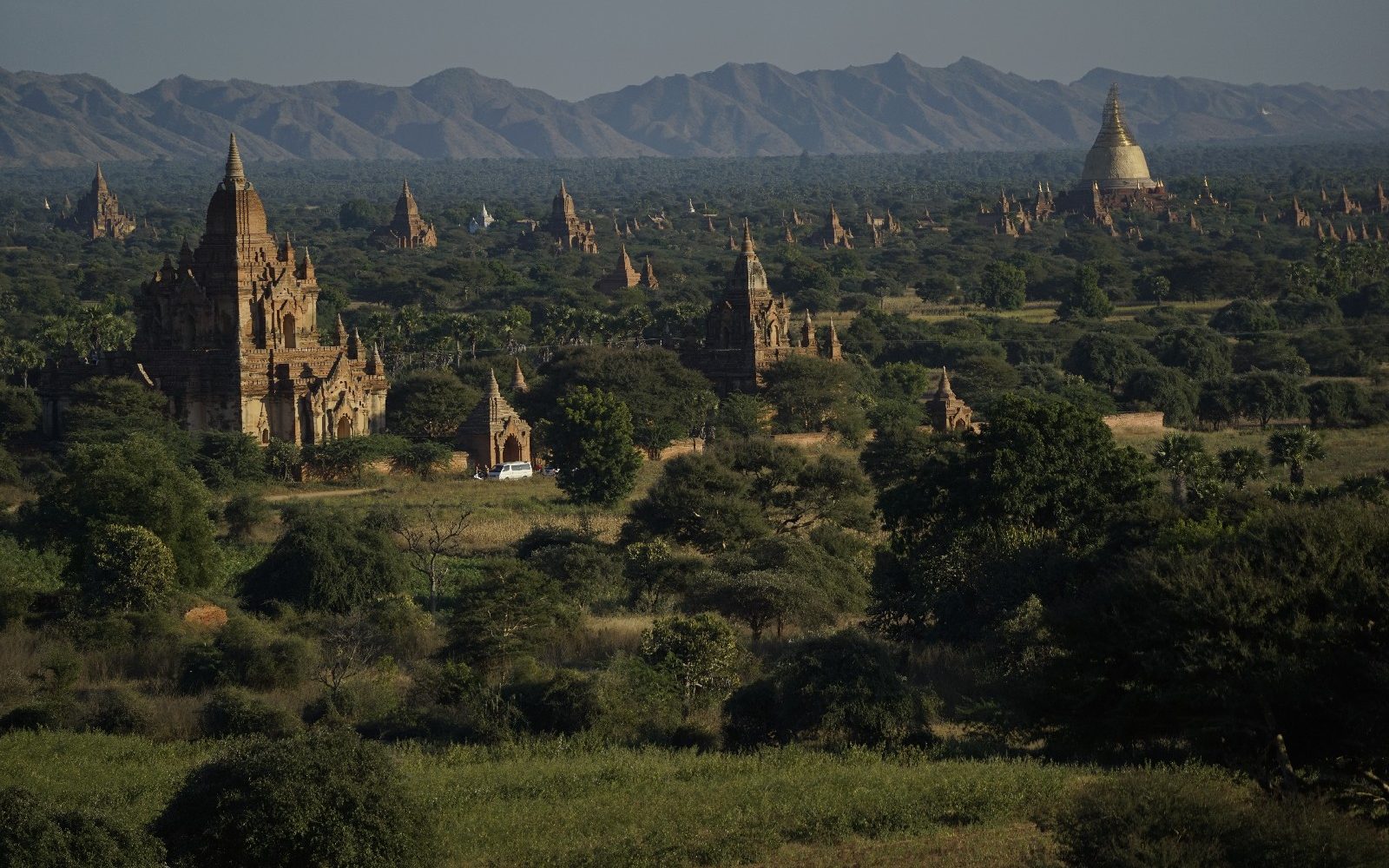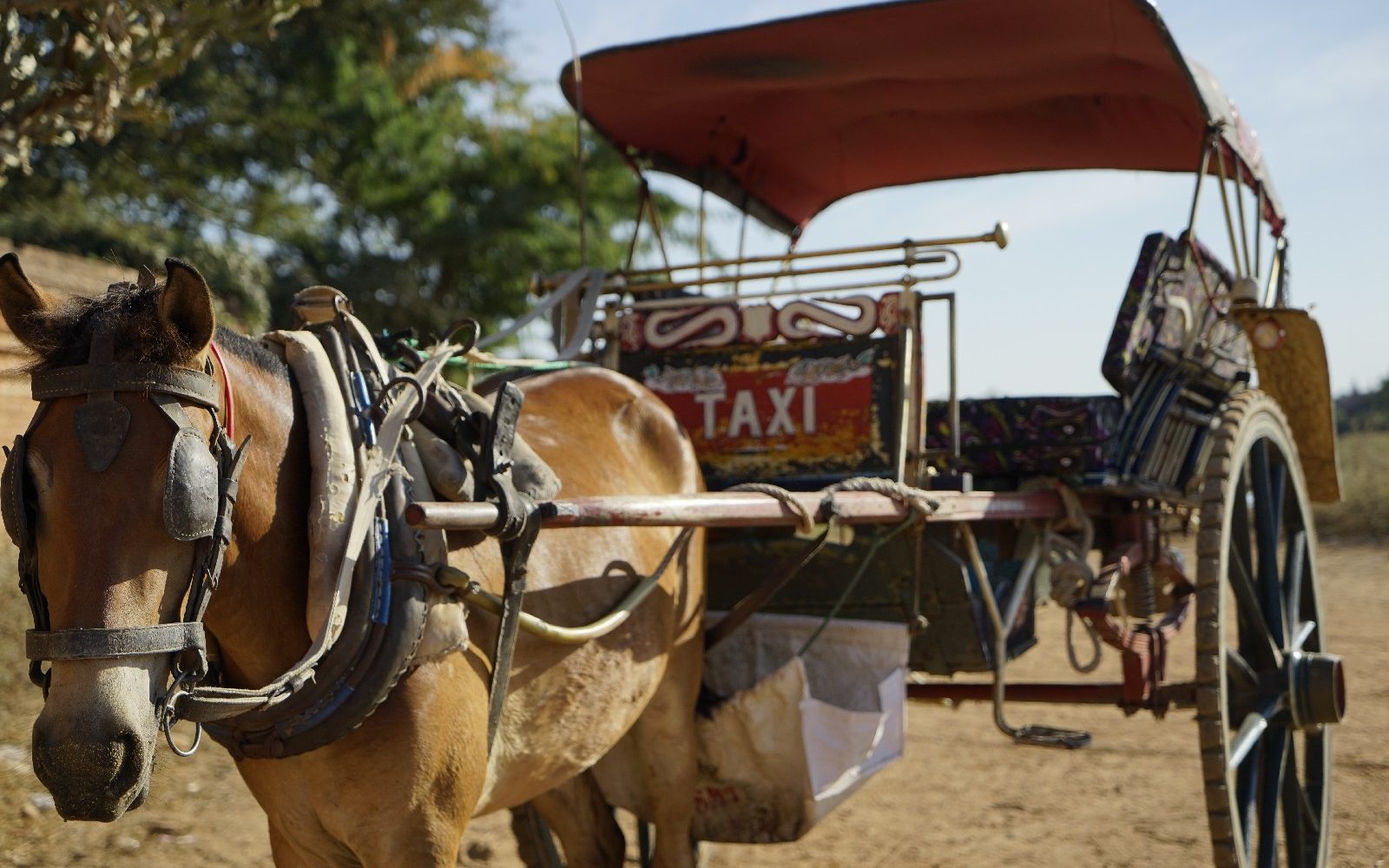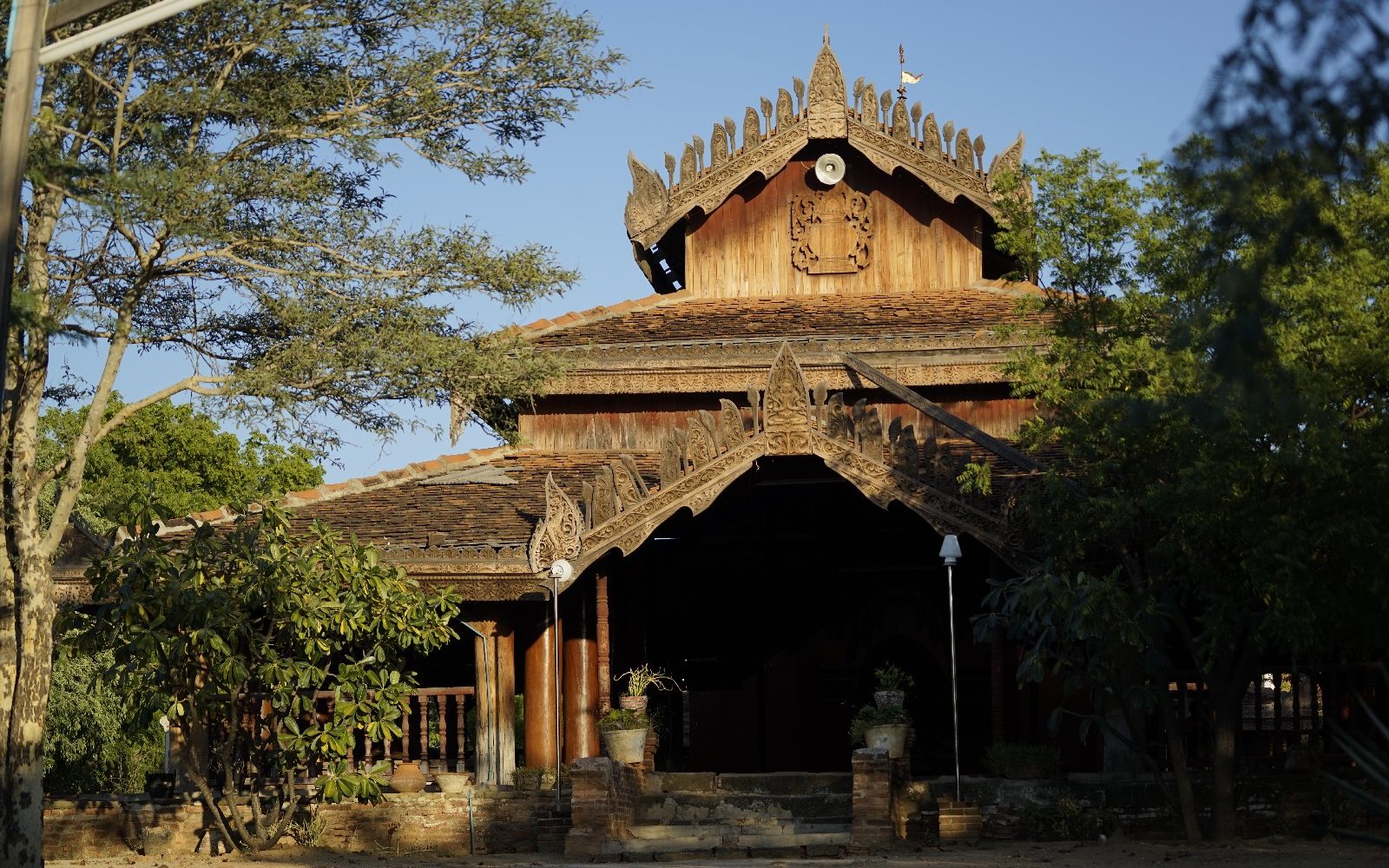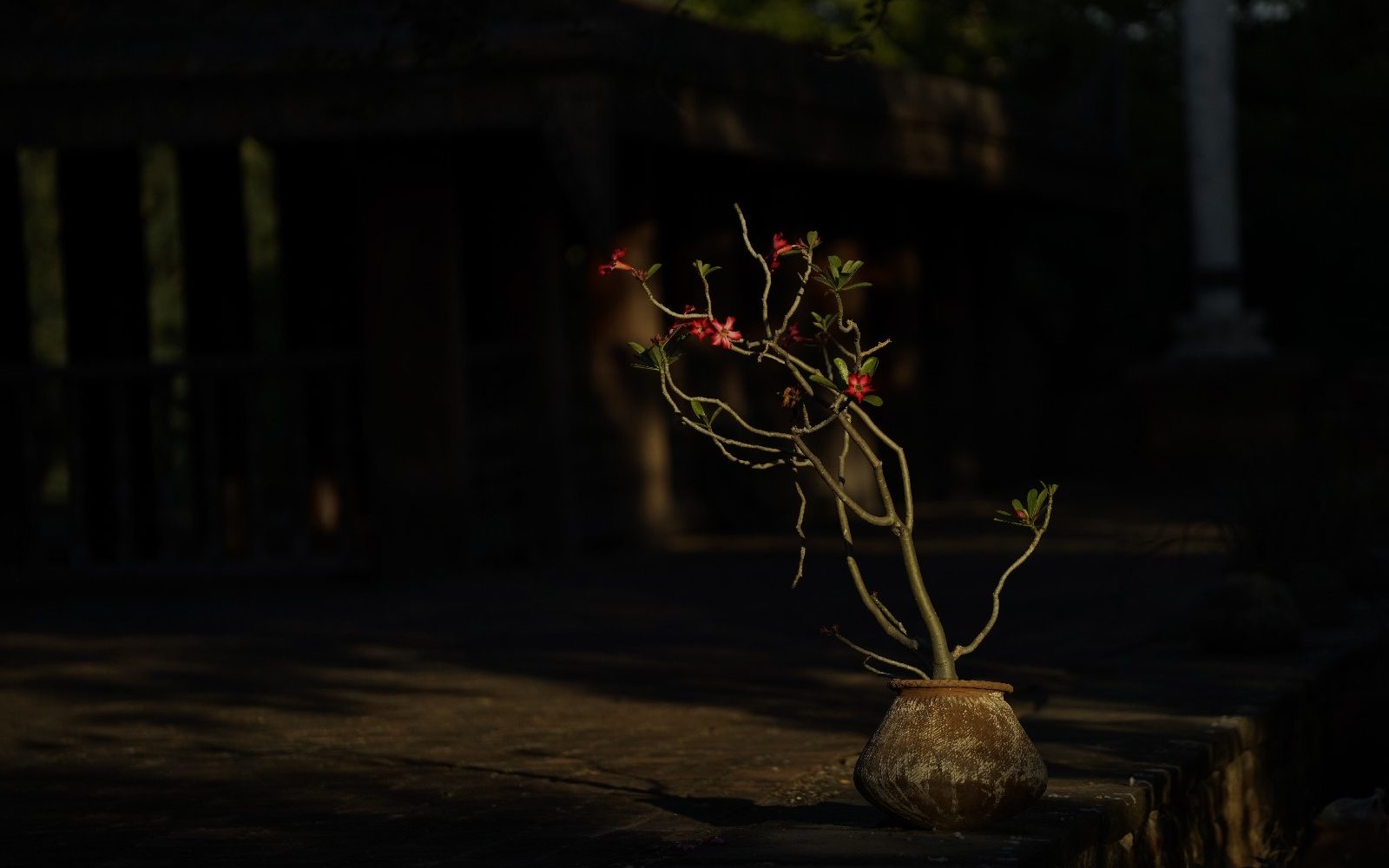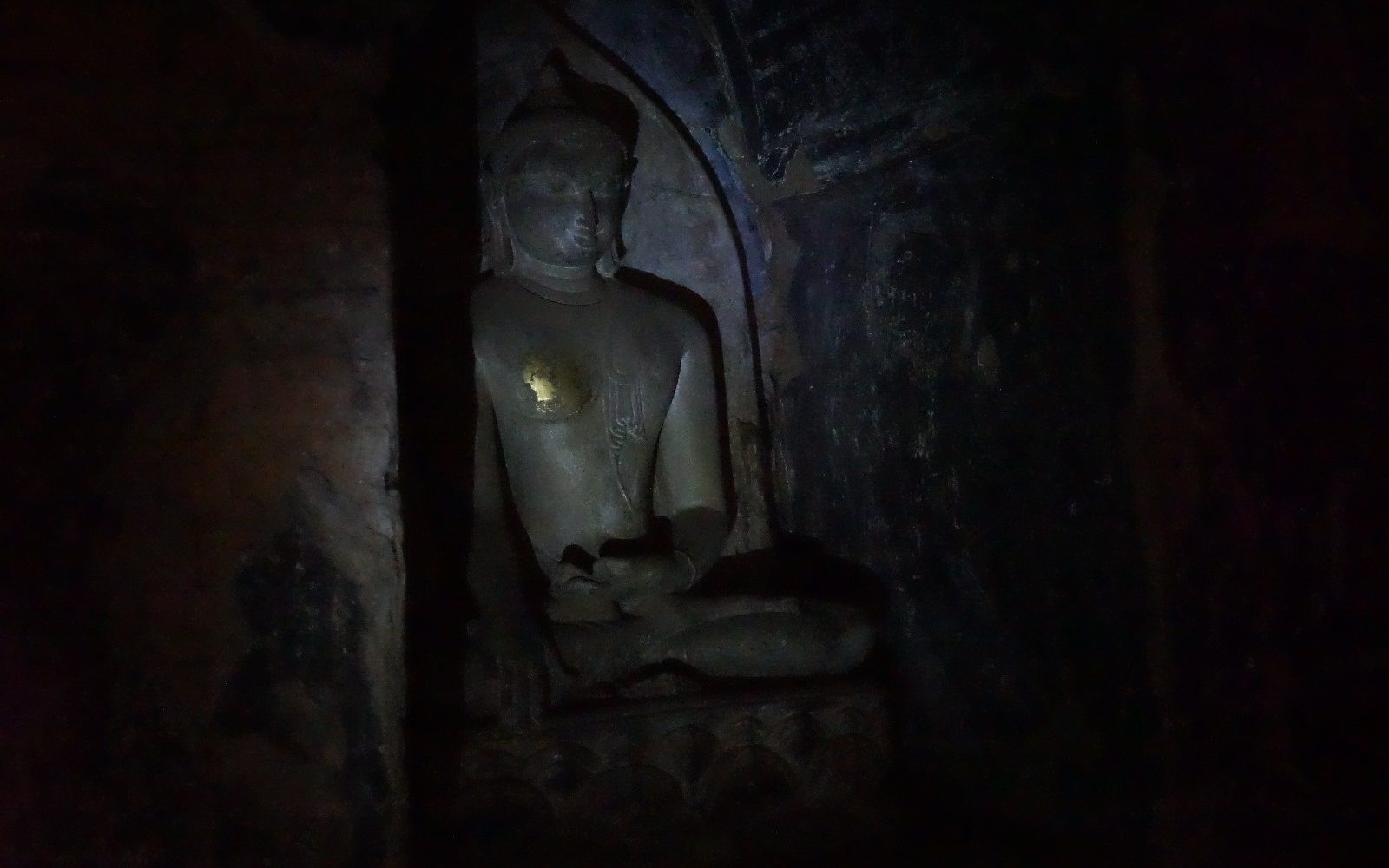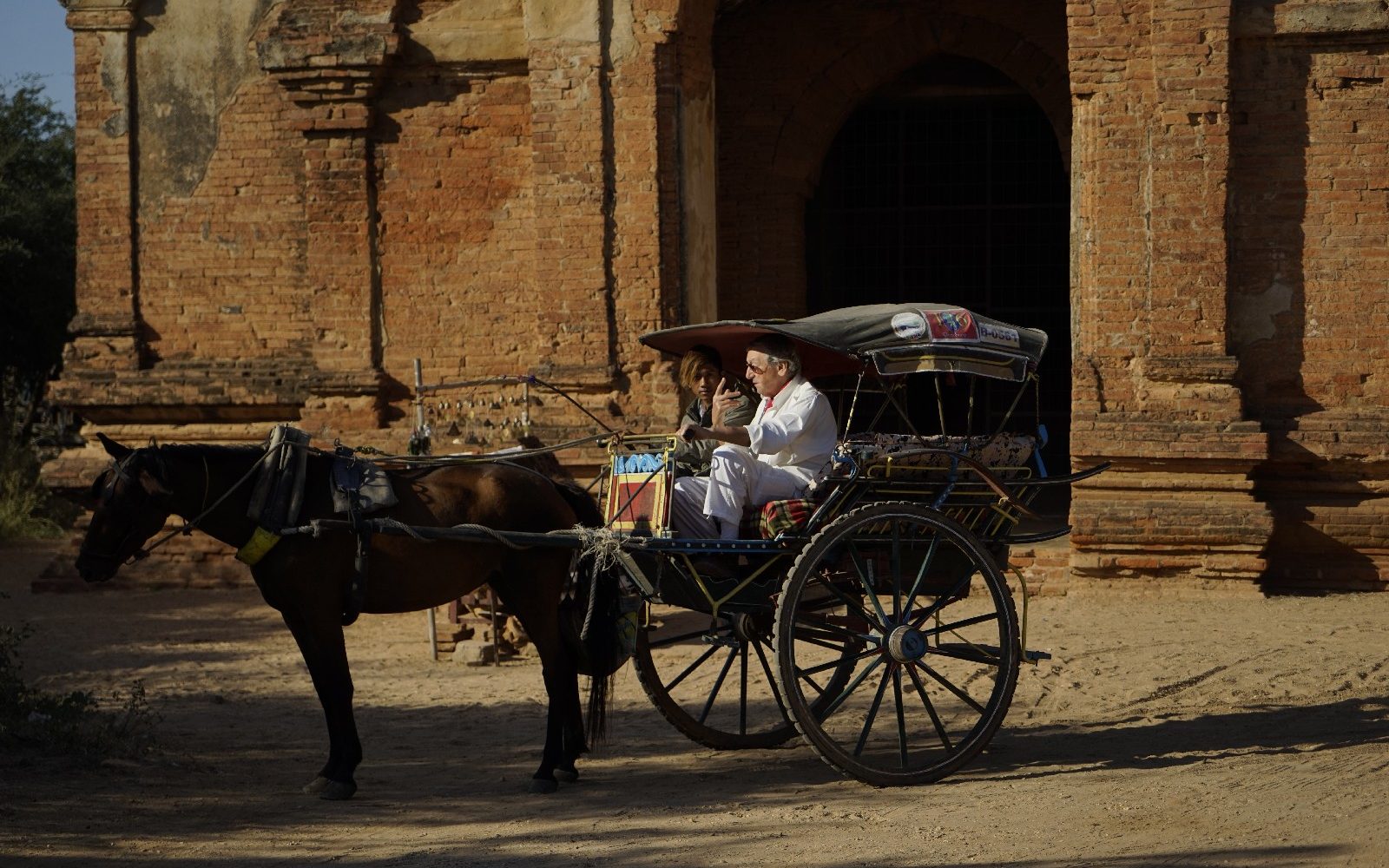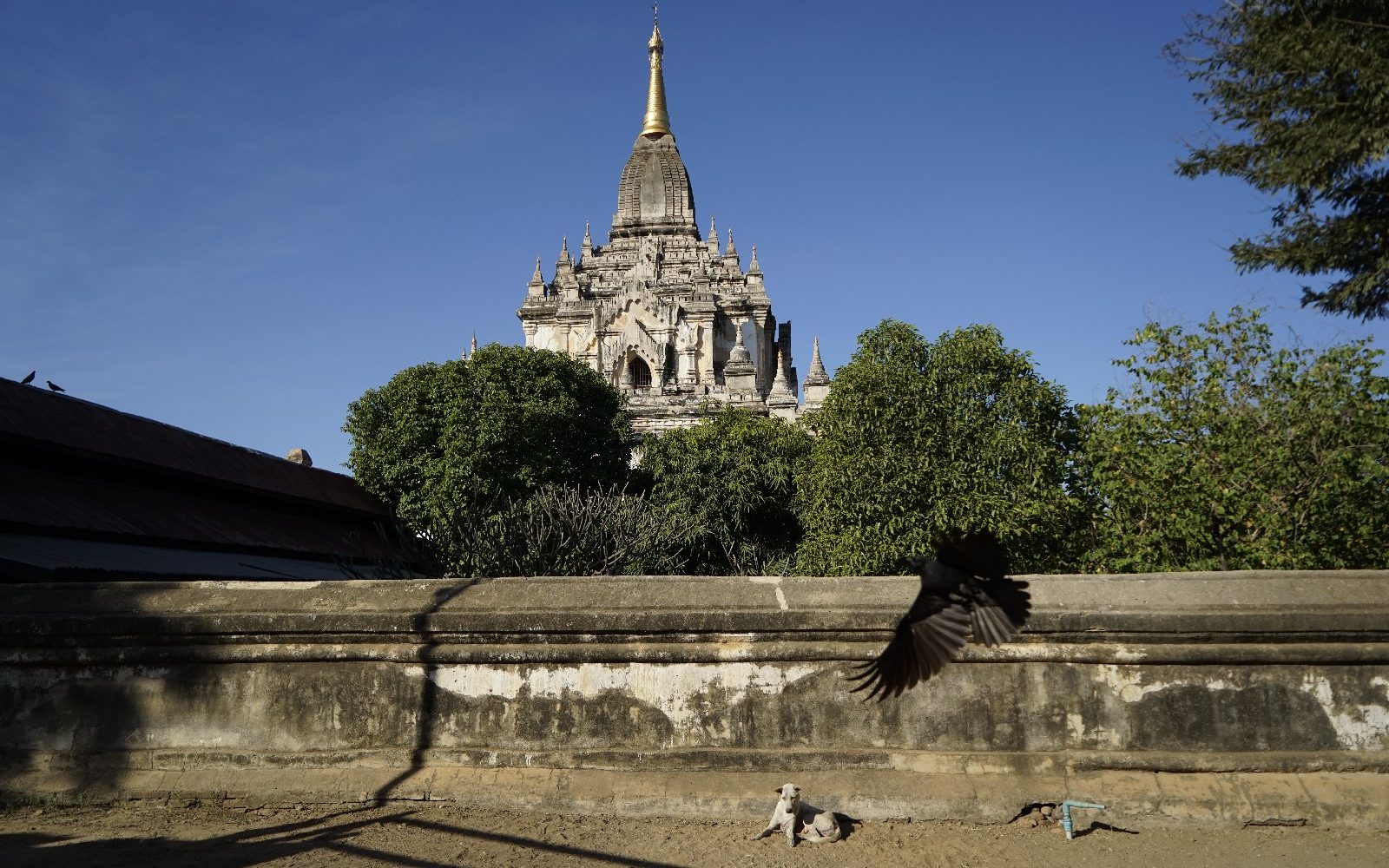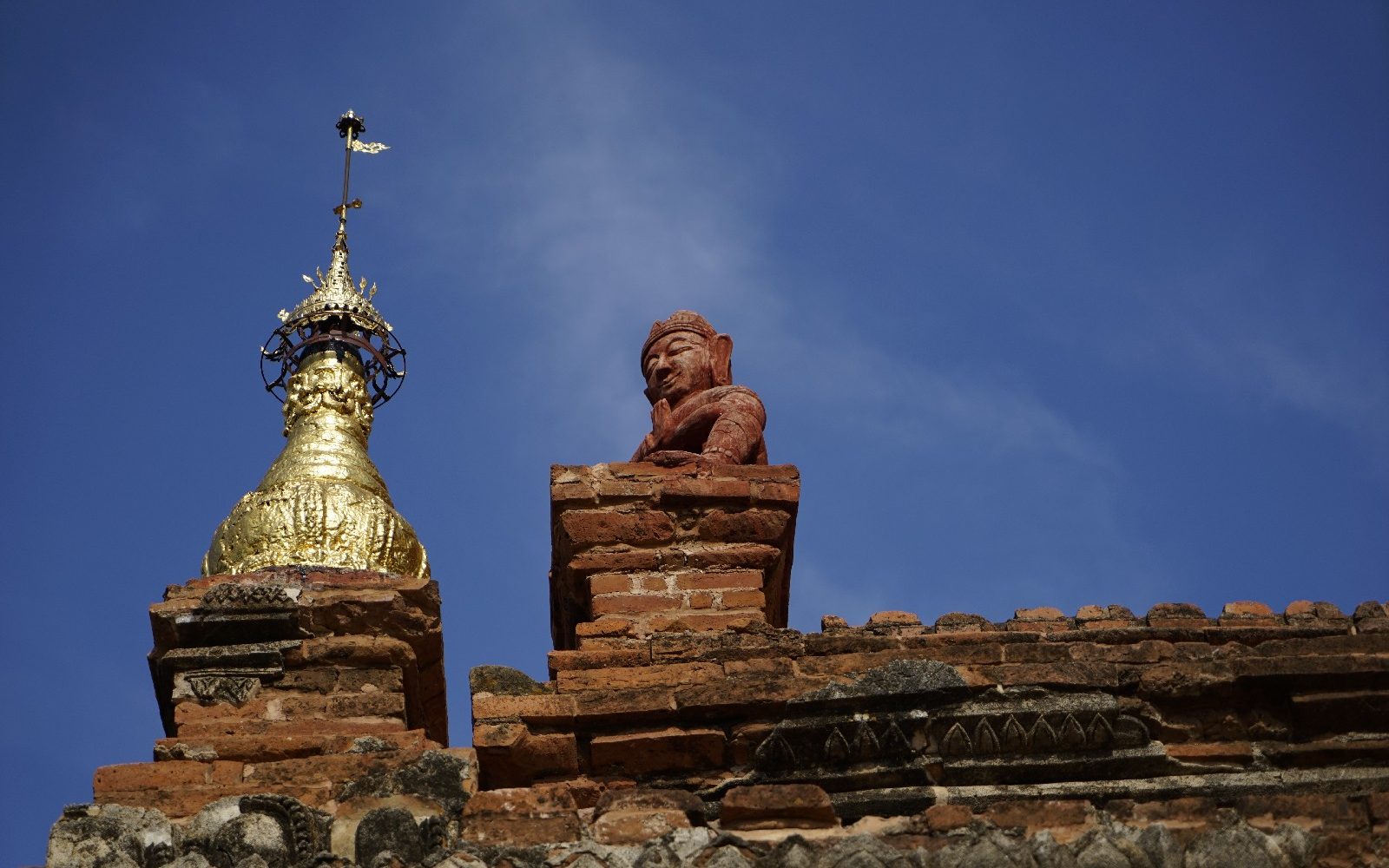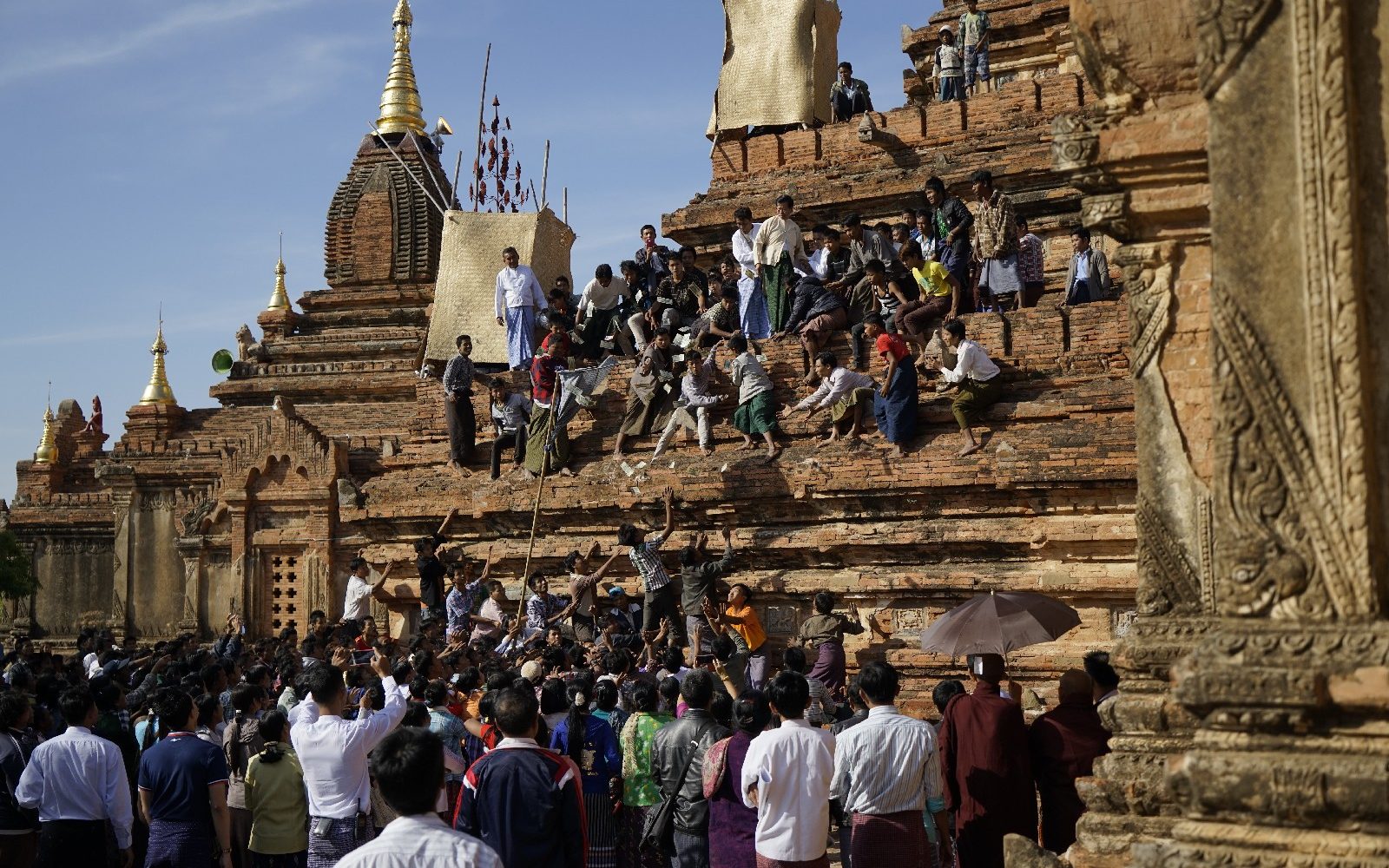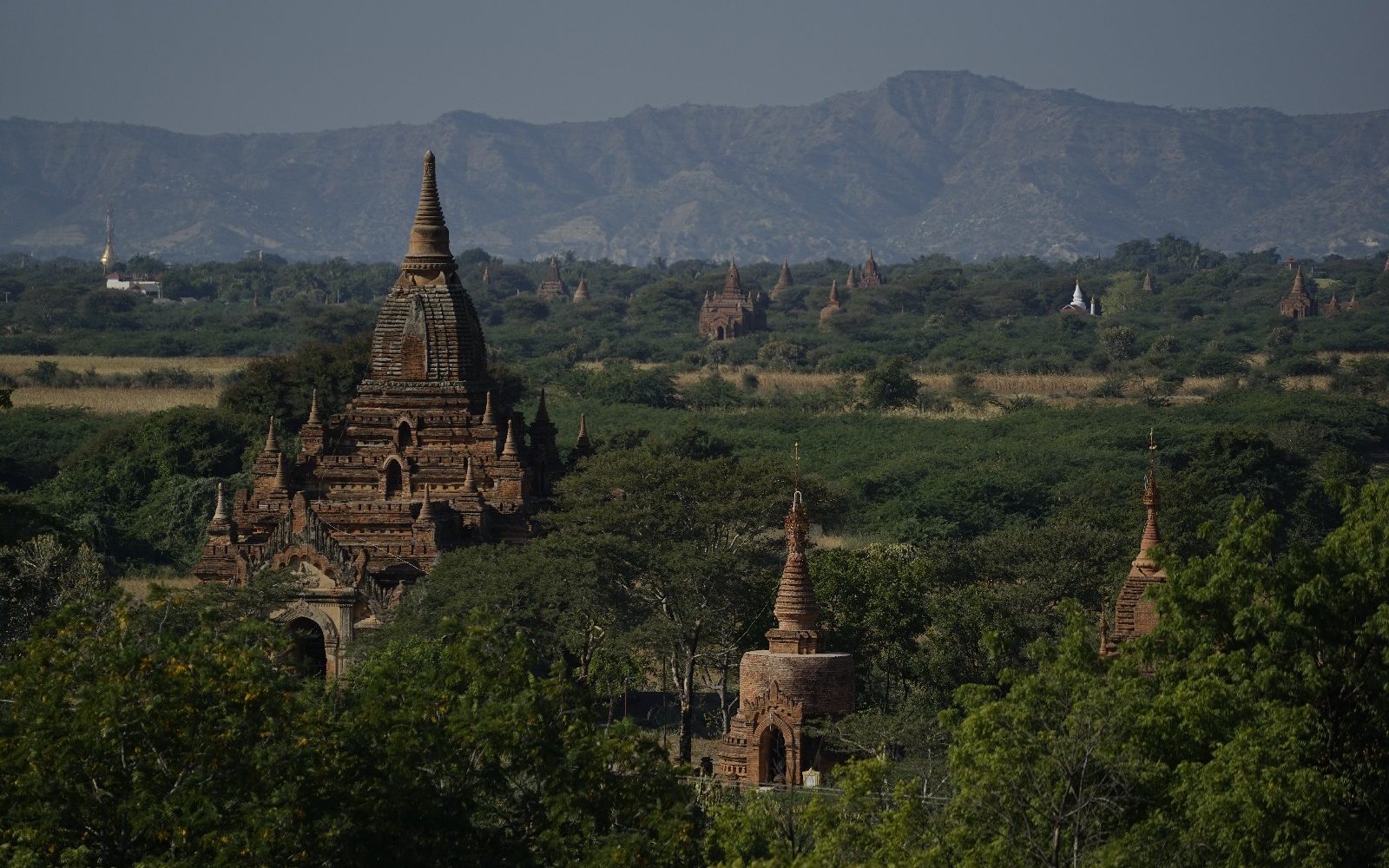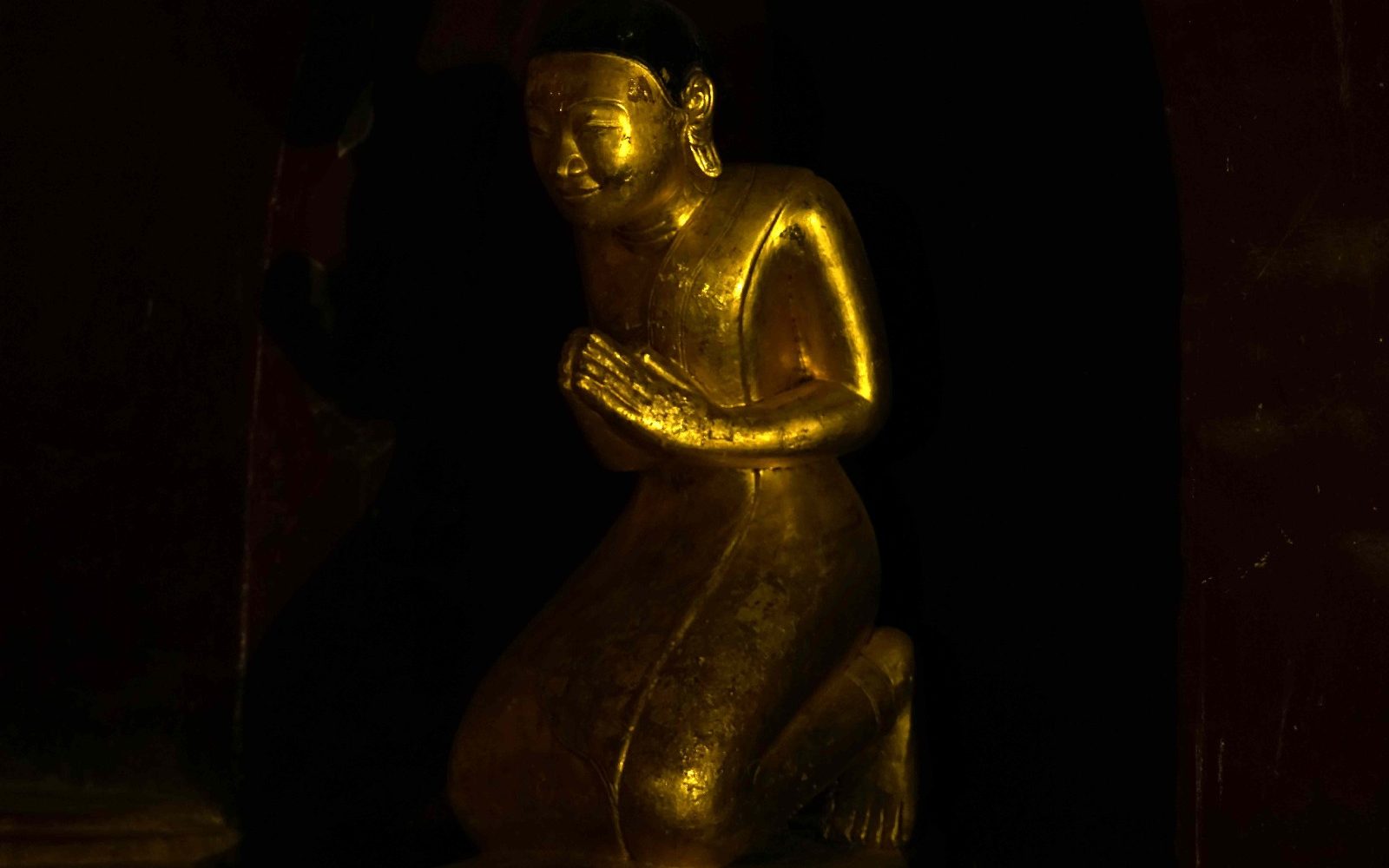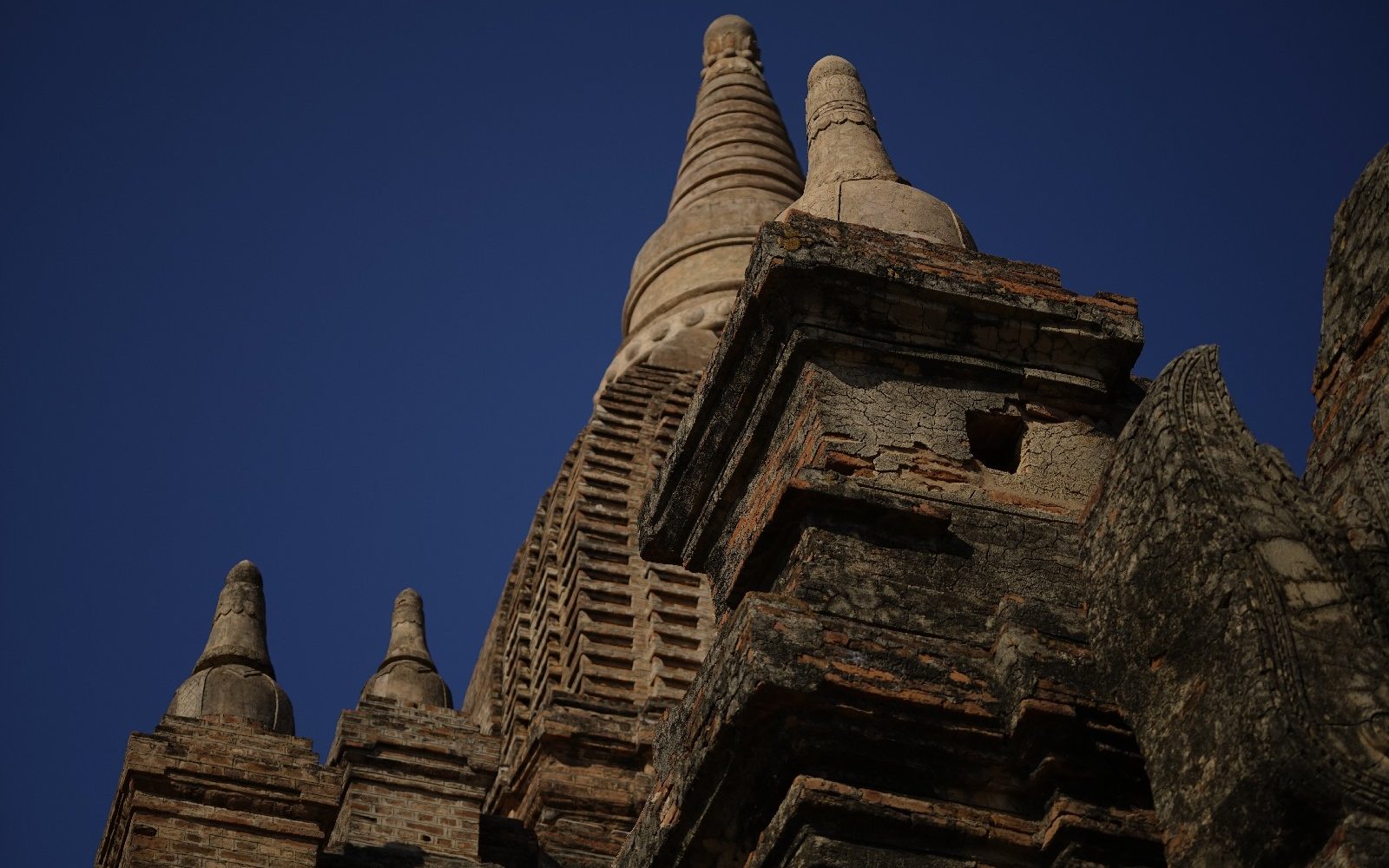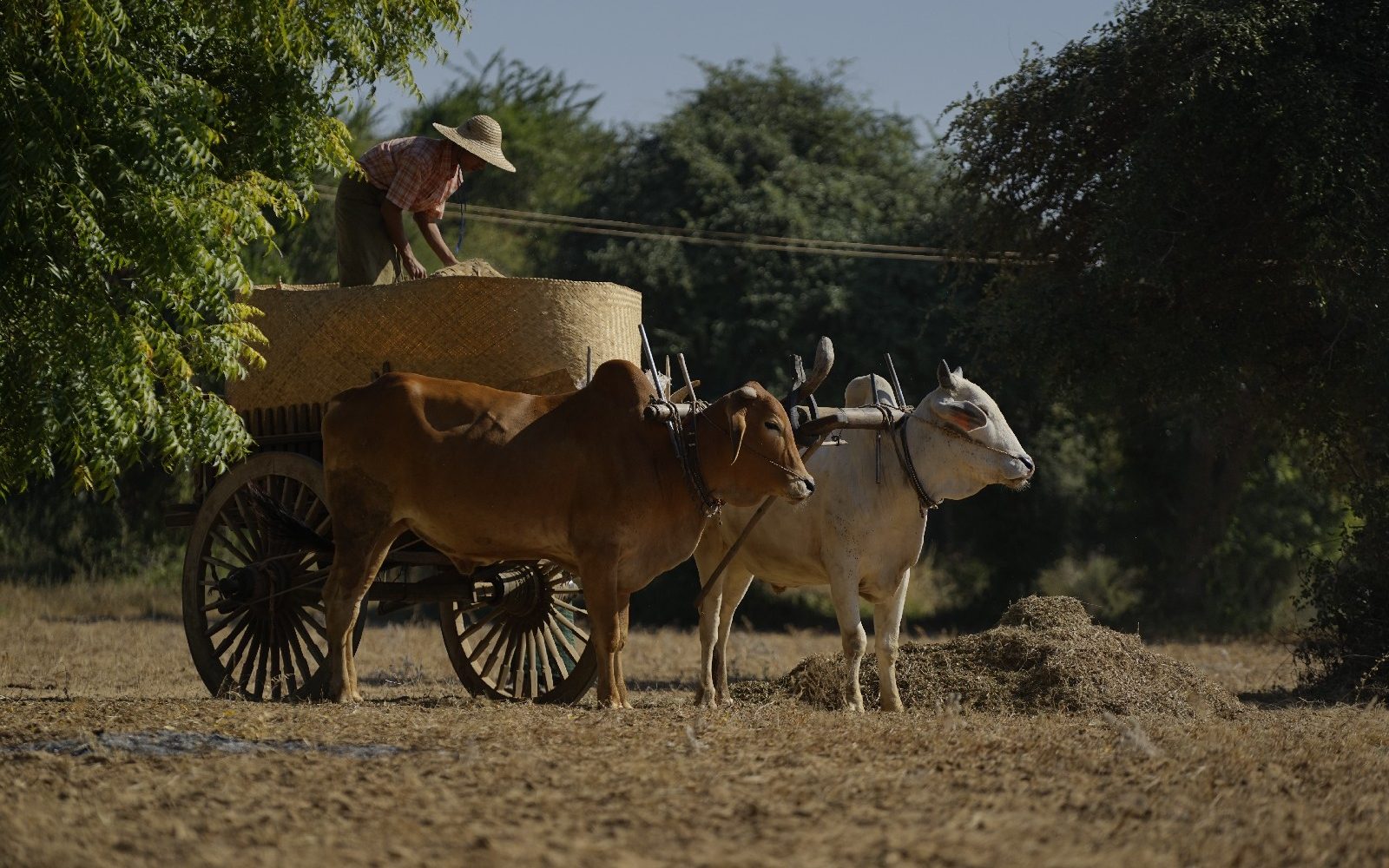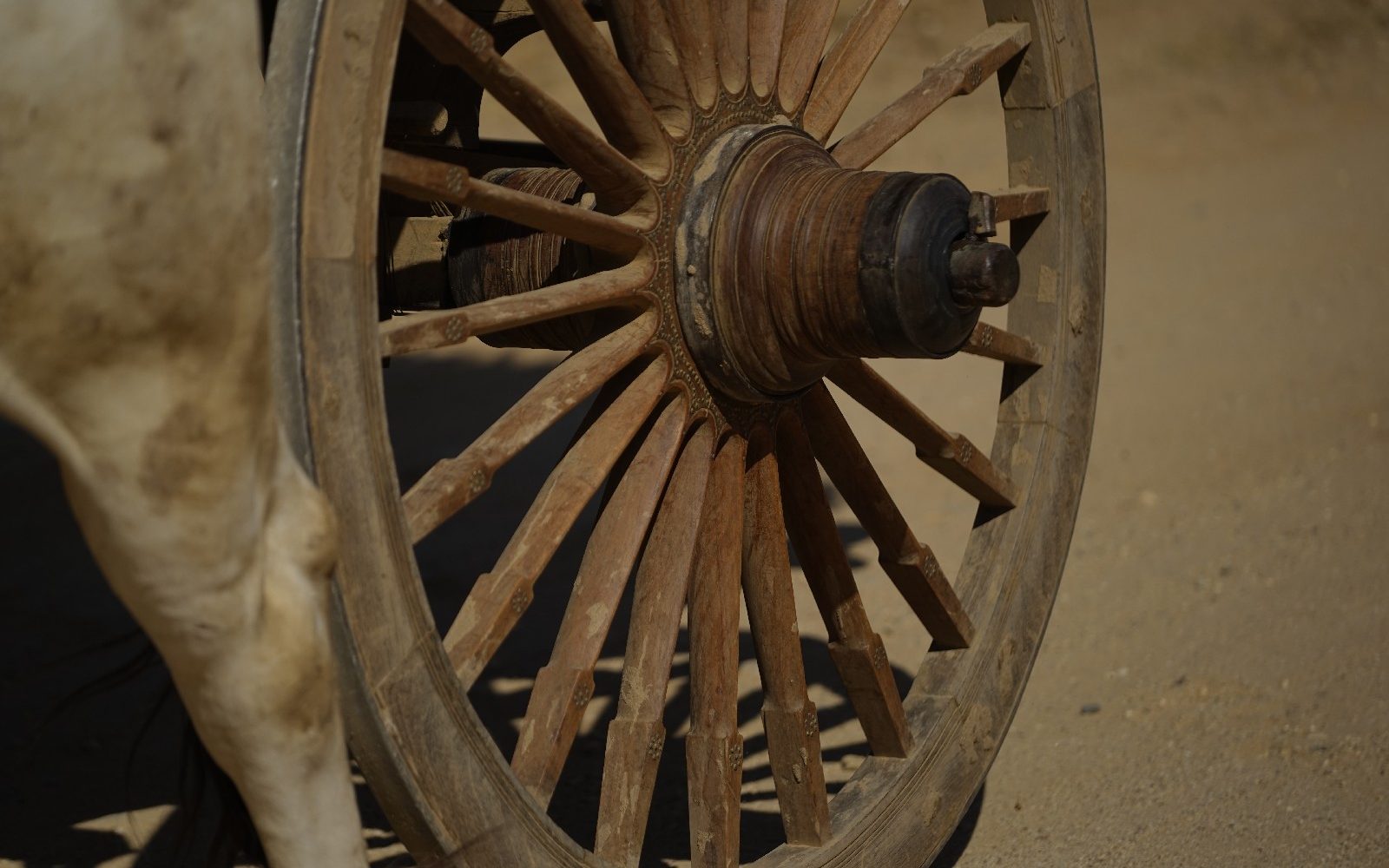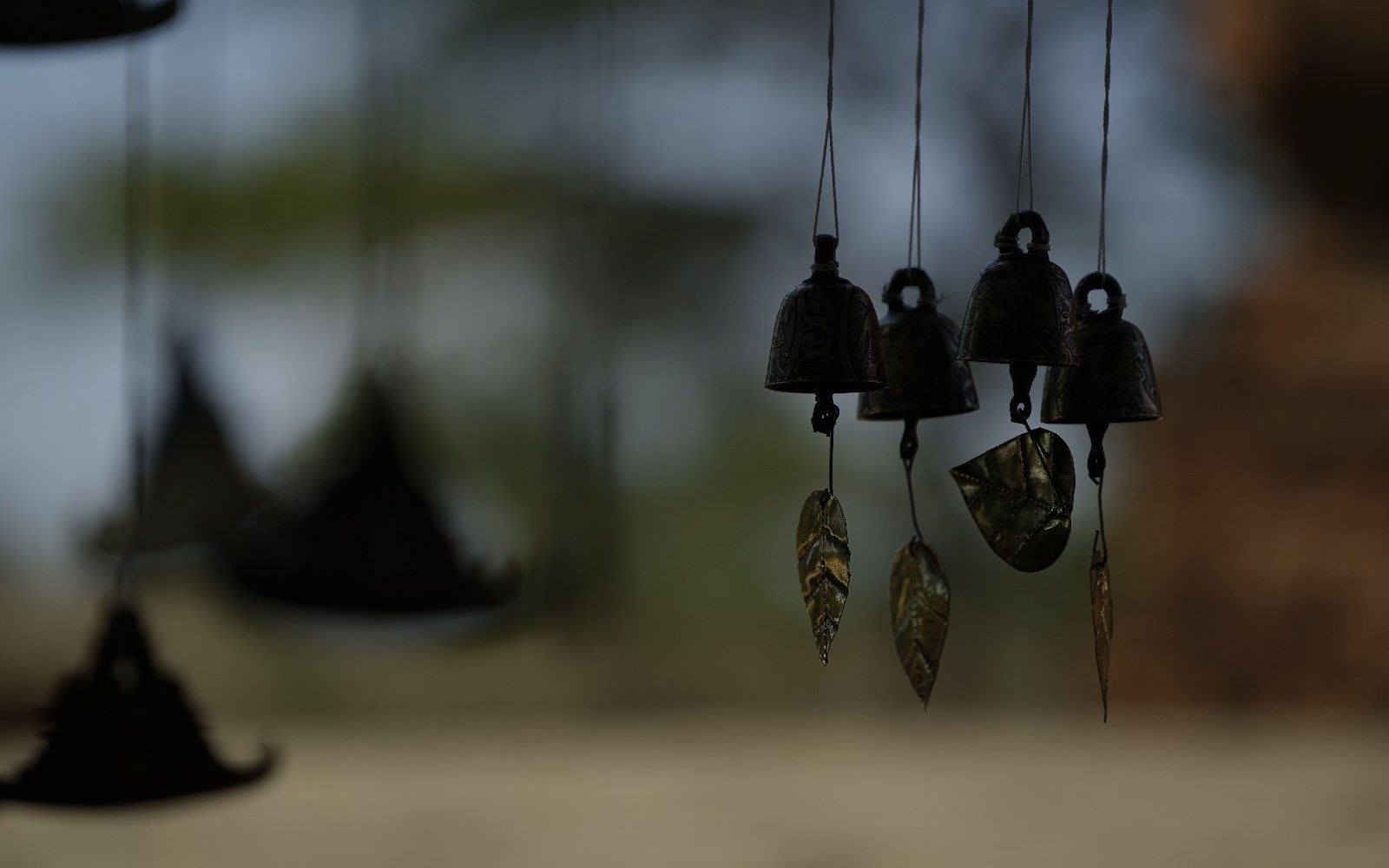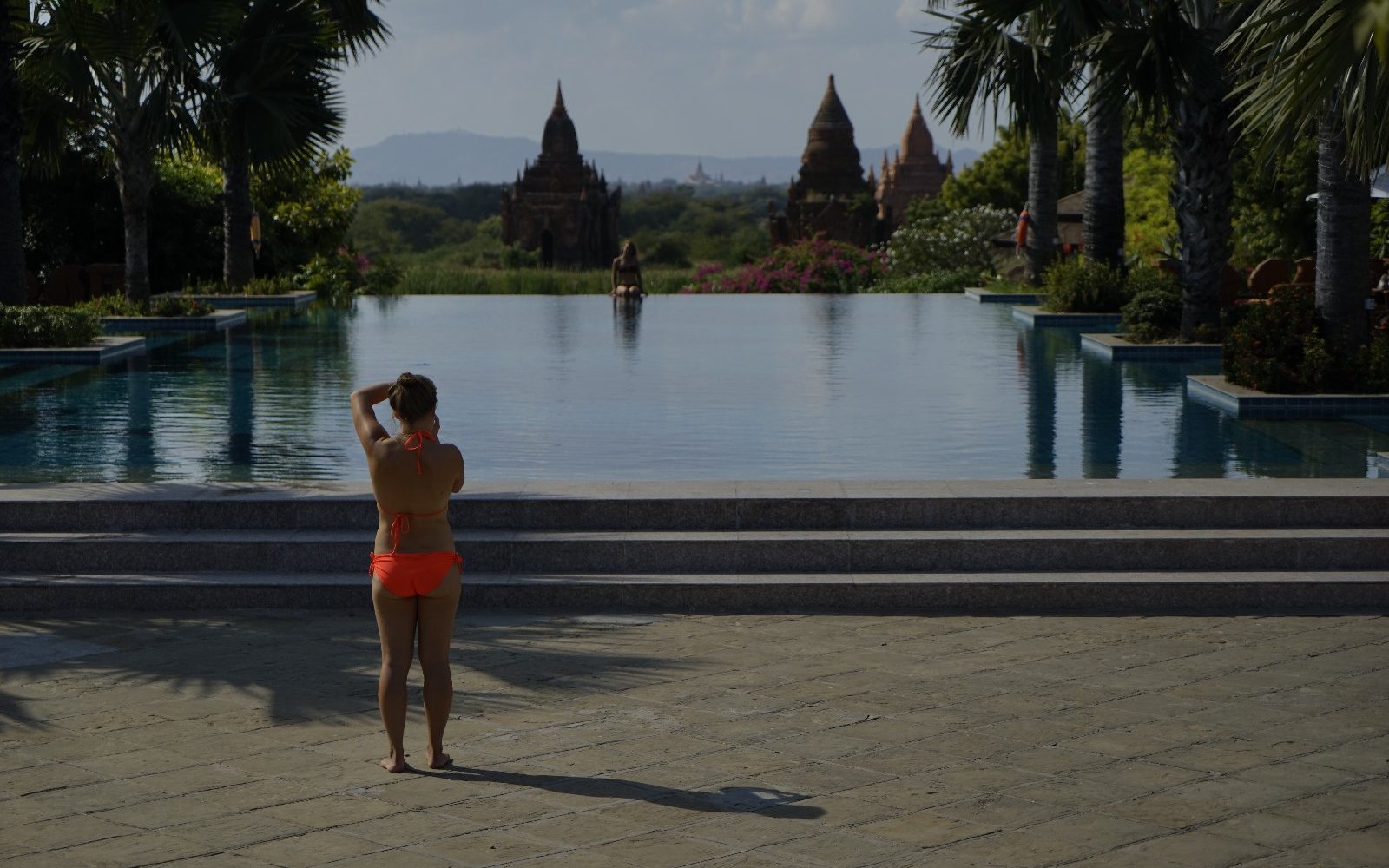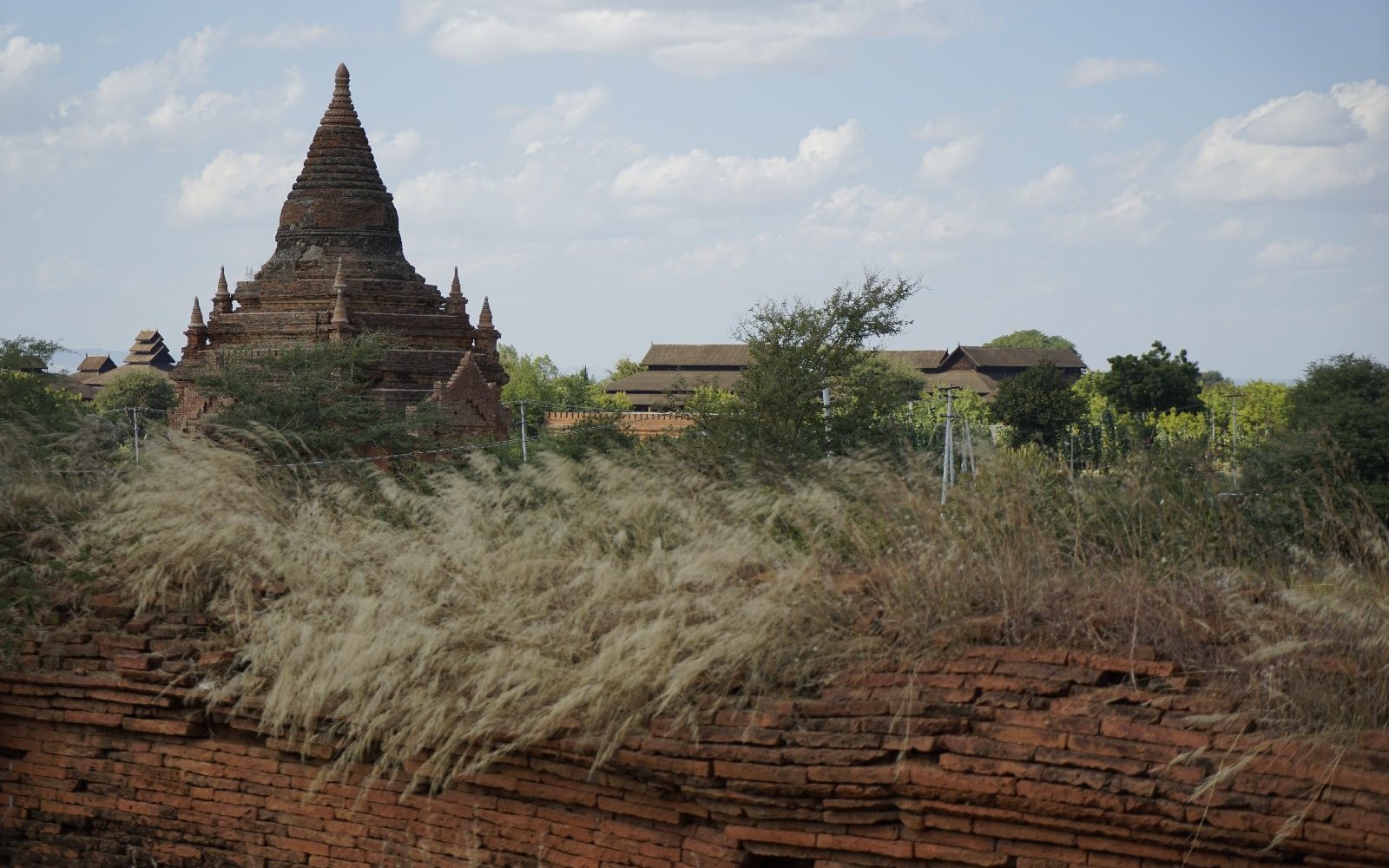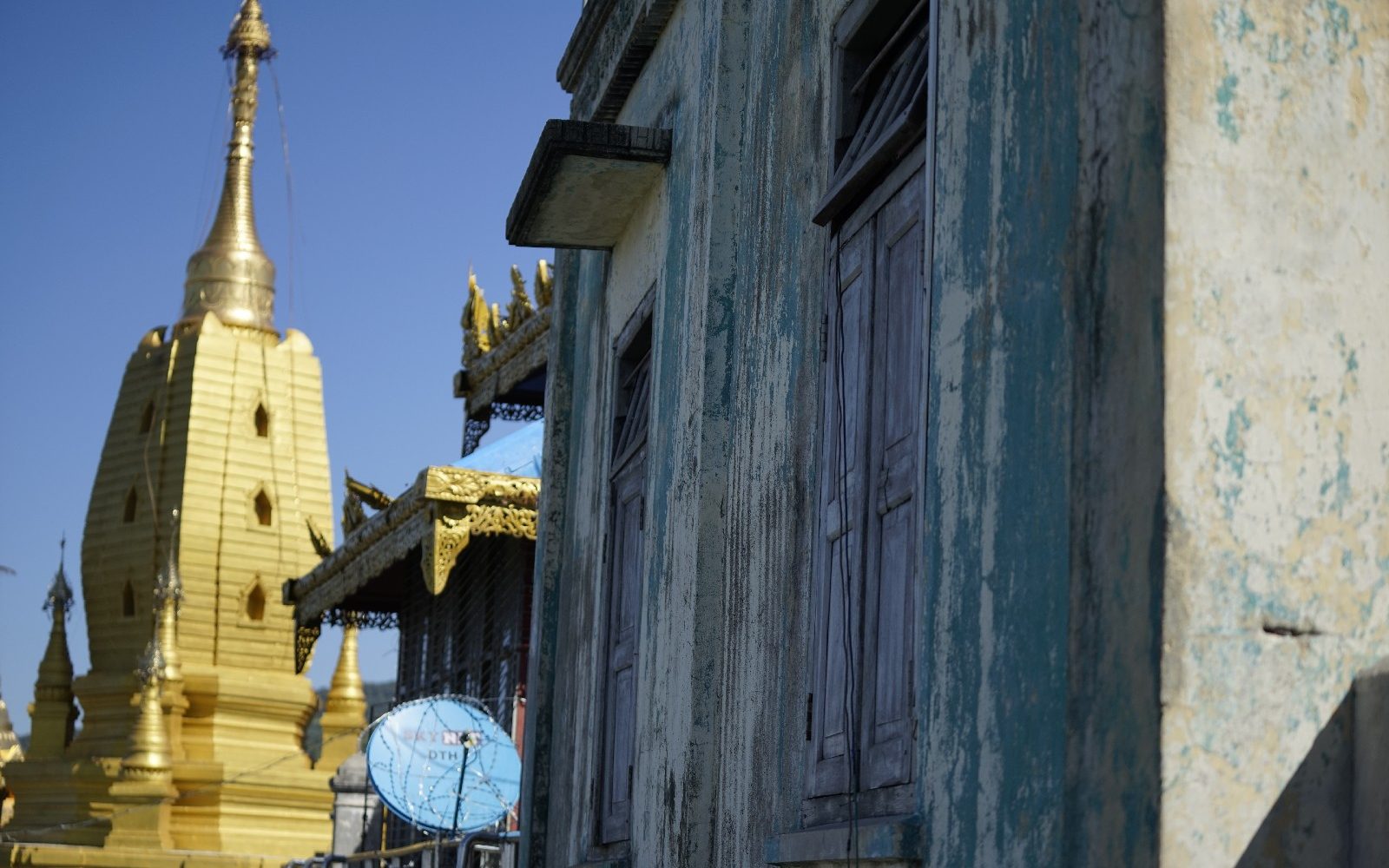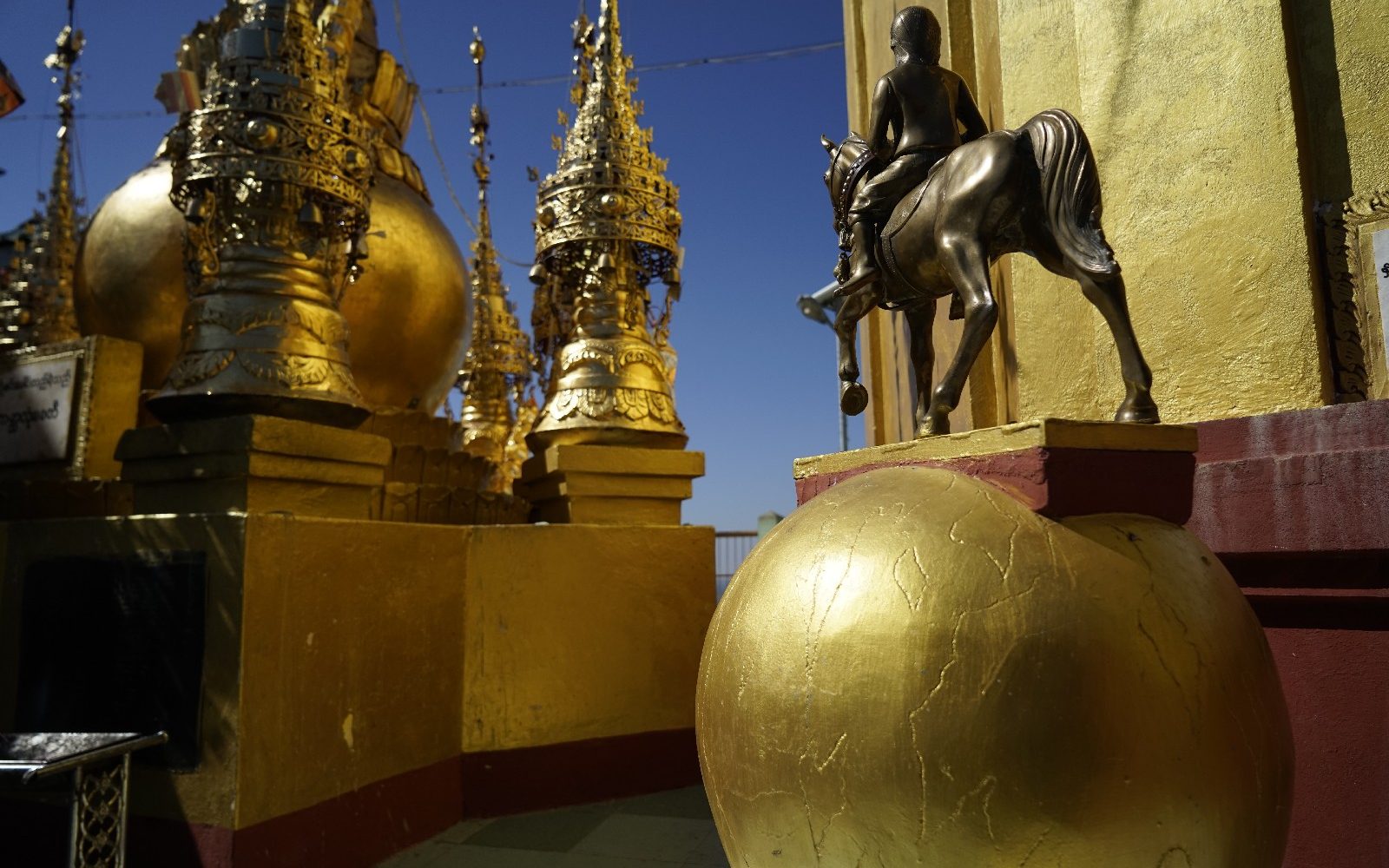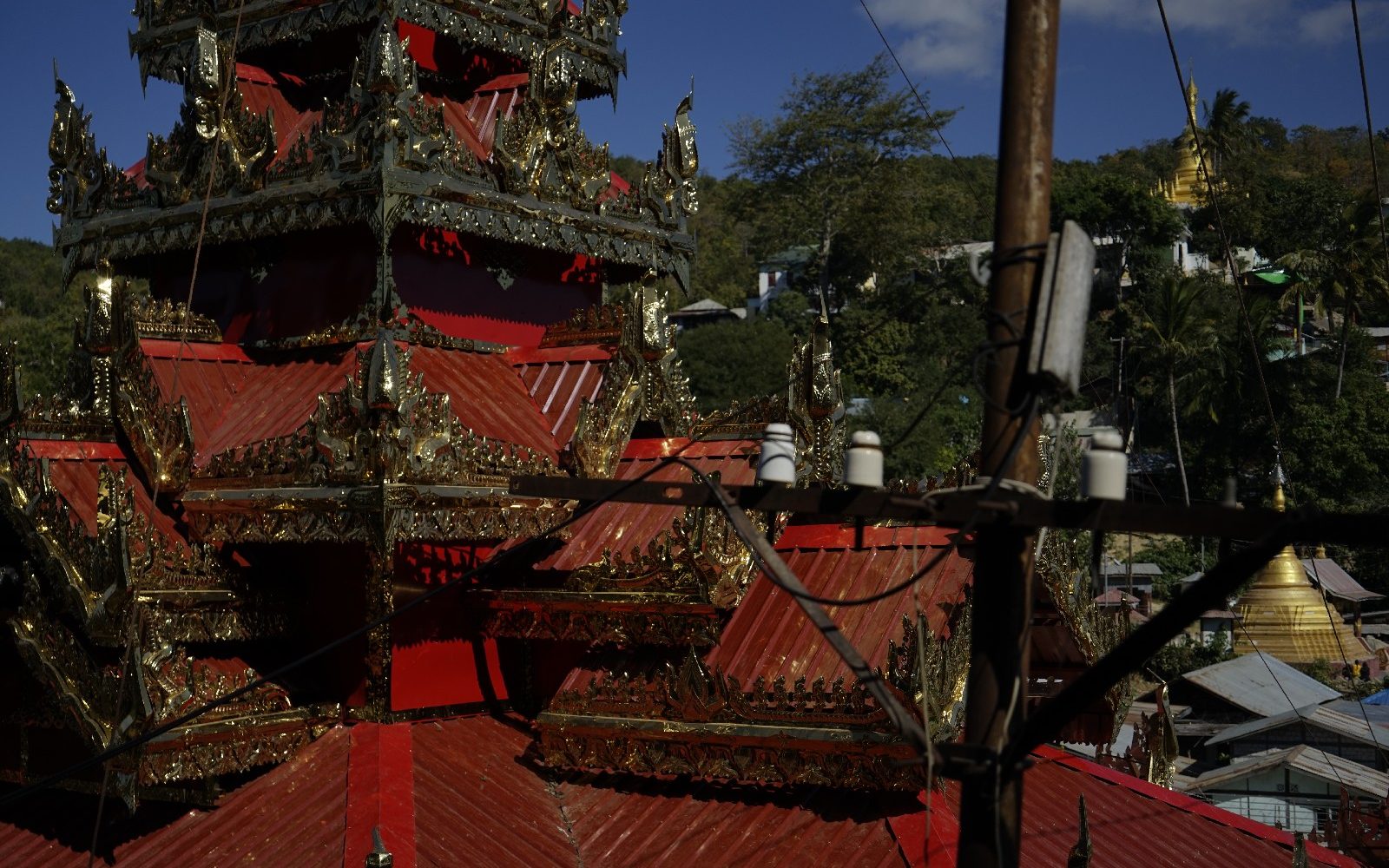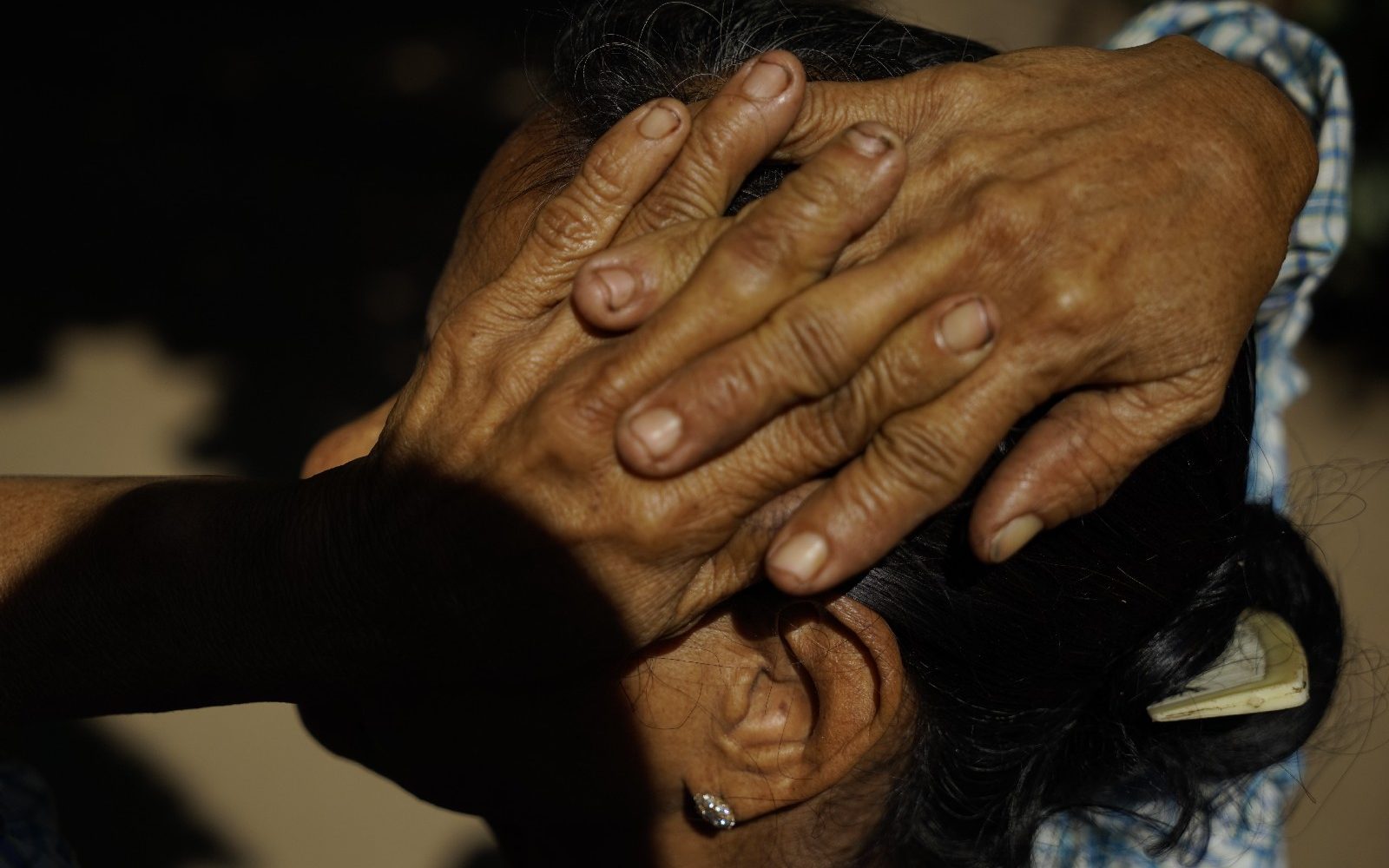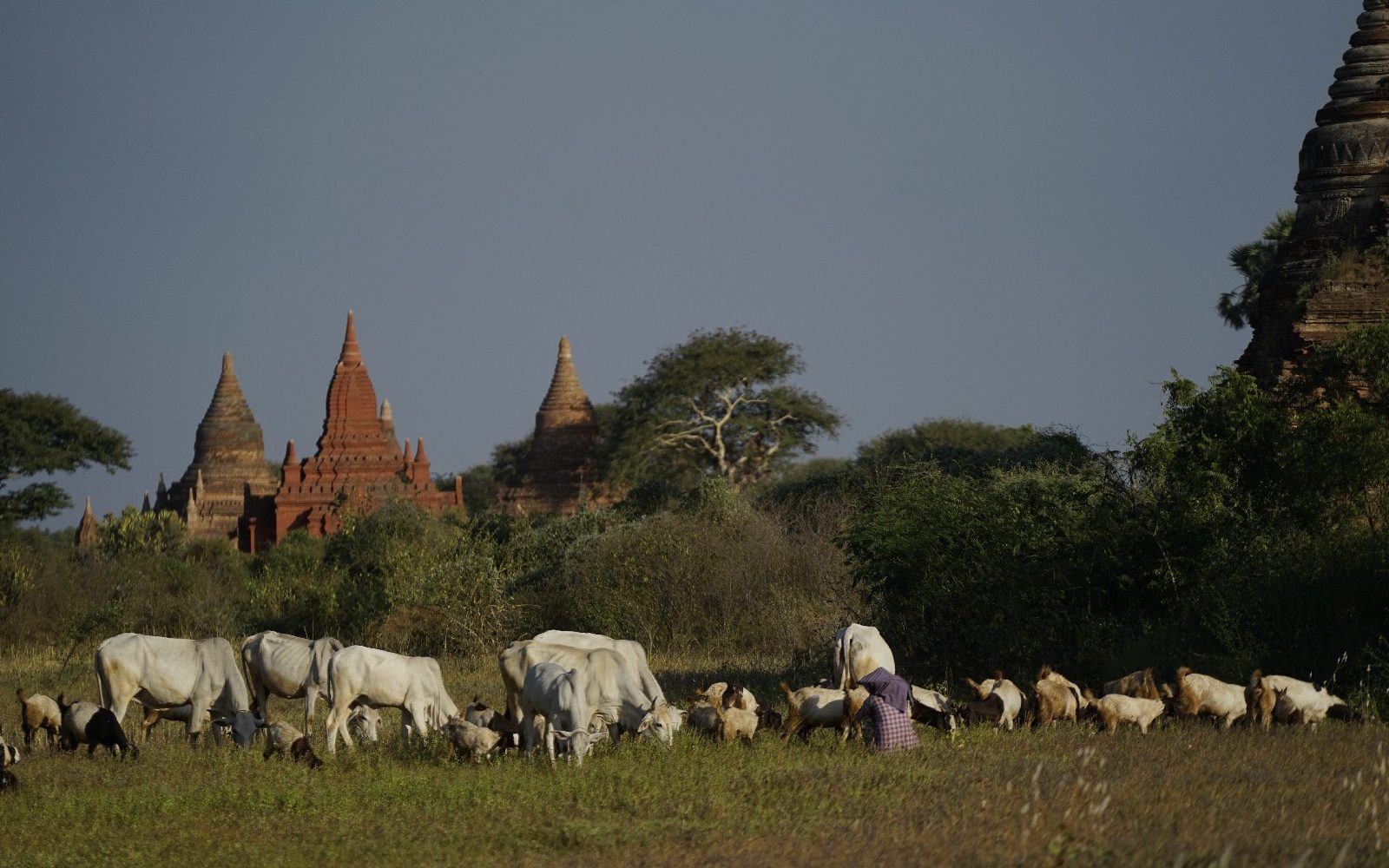Travel Notes: Steaming hot streets, everything pushes its way through the old narrow streets of Yangon’s Chinatown. There is no escape from the intensity of people and their creations. Walking past some cycle rickshaws that carry their human load one forward and the other backward facing. Chinese style rickshaws: narrow, efficient and the perfect vehicle for the old roads, lined with parked trucks and garbage deposits. The houses are decorated with mold. The sewers are open. There are streets dedicated to local professions and some just for tourists. Small and big temples everywhere, people carrying their offerings to them day and night.
In the morning, the smog – mostly created by burned garbage -is lifting slowly, dissolved by the morning breeze and the sun. The curtain opens for another day in this new melting pot of foreign interests and opportunity.
Meanwhile the other side of the Hlaing River is pure countryside: ox carts and small little shacks, village life all slow paced just a mile away. The small town of Dalah is the entry port to another Burma – the opposite of Yangon’s sudden leap into the 21st century.
After you have made it past the harassing taxis and rickshaws at the port, you are on your potholed way to the Stone Age. The snake temple, home of twenty lovely and friendly python snakes – in the care of pink dressed nuns – is something like a live horror movie. Local visitors and tourists are frightened of the snakes but still they go close, take pictures and make offerings: it’s about beating your inner fear. A huge pond surrounds the snake temple. Here you can fatten the gigantic fishes with a bowl of holy popcorn, sold by nuns. The same nuns who would certainly kill you, if you forget to take your shoes off.
In one of these villages on the other side of the river, boys played a soccer match -it seemed to be an important game between local 12-year olds. The village elders blocked the whole intersection, now fancying bamboo made goals with fishing nets. The whole village came to watch and cheer. It was touching to see the importance of this game for everyone living here.
There are huge huts made from palm leaves and straw with big ovens for the pottery works. Pottery is done everywhere. They produce small kitchen items like bowls and tea pots – but also, the huge buckets that will contain the daily ration of water for the household.
An interesting feature in this country is the water bowls left outside of every houses, for passersby or thirsty spirits to refresh themselves. Sometimes they also have a water bowl on the ground, for animals passing by.
The villages have different styles of houses, some of them are very old and built from hard wood. These structures last, because in the countryside mold is not such a problem: the air does not stand between the buildings like in the city.
I was invited into one such house. Inside was an old lady sitting like a Buddha on a plastic chair, folded up like a doll without eyes. The lady just had her 104th birthday and was happy to hear visitors in her home. She suddenly stood up and walked towards me, sitting down quickly on the wooden floor right in front of me. She cannot see a thing anymore, but she was listening and liked to have her hand held. Her family was very proud of her. She was the most respected person of the household.
Heading back to the city of Yangon, crossing the river at dawn and listening to the announcement of the many different mobile sellers on board of the ferry, was a nice introduction back into the Burmese civilization.
Yangon Harbor now has a couple of cool hangouts for expats and tourists. The sheds were used for storage in former times, and some of them are still in use. A businessman started to transform a couple of sheds, one into an art gallery and another one into a bistro and restaurant. The roughness of the structures was kept, so it still looks like an old shed, and all the life around it makes you feel you are a harbor worker – just having a cappuccino and a burger. Rickshaw drivers pick up their customers from there, charging them 2 dollars to go anywhere in Rangoon – customers who easily spent 6 dollars for a cocktail a minute before. The clashes between new world and old world are going well – so far.
People in general are concerned with the development of their country, they want to go forward faster, more new roads, tearing down the old buildings, opening media and businesses with the rest of the world. For them things go too slow. Even though every rickshaw driver has a cellphone as big as tray – they do not have internet access, but they want it. Restrictions apply; access to information is limited. The world is watching Burma and Burma is watching the world. The 2015 elections will probably create some unrest. The surface looks nice, tourists travel in droves to this place.
If you ask the Burmese, they say they don’t like Myanmar. If you ask Tourists which country in Asia they like best, it’s Myanmar.
I arrived in Bagan -prepared for tourist crowds like in Angkor Wat, but it was surprisingly empty. The area is vast and accessible by e-bike, bicycles and horse carts. Locals try to make some business in front of the main temples, selling lacquer-ware, paintings and long pants for tourists who wear indecent clothing for the temples. The whole experience is very pleasant, the e-bikes are a bit cheap and most of them run out of juice after 3 hours and leave you in the ditches of Bagan’s archaeological site. The dirt roads best version is “dirt” – the nastier ones are sand roads, impossible to navigate with a bicycle and difficult for e-bikes. You can feel the horse cart drivers laughing at you.
As soon as you climb up one of the taller structures, you will see pagodas, temples, sadis as far as you can see, all plopped into the landscape without a certain pattern. The structures have been built hundreds of years apart and most of them have gotten a makeover, from whoever thought they needed one. Most of the Buddhas inside are still intact, replicated or restored, some of them badly. I read that some Indian archaeologists used acid to “clean” the walls of the “old paint” –
leaving sad leftovers from the past.
In-between the temples are small farms, where people live in the simplest huts made from palm leaves. They have access to wells but have to carry the water quite far, or buy it from water dealers who deliver by ox cart. The farmers grow peanuts and palm sap for toddy and palm sugar. There are some goats and cows and the whole area seems to have looked like this
thousands of years ago.
Off the main roads it is quiet, peaceful and pure enjoyable.
In Bagan it gets really cold in the night, about 5 to 10 degrees Celsius. Locals wear woolen hats and gloves. This is the main spot for watching and photographing the sunset is “Sunset Pagoda”. Like a magnet, this huge white Pagoda, where you climb up very high to get the best spot, attracts ALL the tourists at 5pm. You hear a chorus of people saying “Wow” and then the clicks of probably 2,000 cameras going off continuously until the sun is gone behind the hills, the Irrawaddy and the Bagan Temples.
After witnessing something as marvelous as a sunset in a field of temples starts the run down. All the tourists, many of them very old, have to climb down the small stairs, each step hammered thousands of years ago, before the invention of DIN norms, with individual height and width – perfect for fit young monks, and not so pleasant for big fat tourists with shoe size 46.
Bagan’s population was forced to relocate in 1990. There are now two “Bagans”, one called “old” and one called “new”. The two parts are a 15 minute drive apart and have developed into substantial tourist towns; many first class resorts with prices of more than 300 dollars a night are booked.
The backpacker, with filthy hair and smelly clothes seemed to be a thing of the past, the youngsters come with more money in their pockets than the old ones – and they impress the local youth. Burmese youngsters imitate western attitudes and speech. Military police in full combat gear, with weapons and shields are positioned on every major intersection. Most of them are playing on their cellphones like the rest of their gadget mad countrymen.
I saw them in action, all going into a village. The road was blocked immediately for everyone to pass, for sure you will not read in the papers about it. This is all happening while tourists worry about if they have enough sun protection on their face. Local people speak just the smallest fragments of English.
Myitkyina, once a battleground for the colonialists and now won over by the missionaries: American Baptist and Catholics churches have a strong following of Kachin Nationals and other ethnic minorities. Wikipedia says that Myitkyina is the heroin capital of Asia. Heroin is locally known as “Number 4”. I could not find out what numbers 1,2 or 3 are though. The hotel I am
staying in is one of the best in the area; still, Wi- Fi and hot water come by the drop and Jesus greets me in the entrance hall. Tourists are a rare sight.
Christmas here got me a bit paranoid, people really geared up for it and I missed the Catholic Church invitation from my noodle soup food stall for the midnight prayer service. The main reason for tourists to come to Myitkyina is the confluence of the two rivers who then form the famous Irrawaddy. Directly located at the Irrawaddy, people arrive with their produce at the shore and dissolve into the never-ending stream of people and voices and colors.
The north of Burma is heavily deforested now, it must have been dense jungle before that. The famous Ledo Road or Stilwell Road just sliced through. Today some very sturdy iron bridges have been built. I assume this is not to benefit just the locals, but to assure transport of wood and military into and through the area which is still a source for conflict. I just
read there were clashes in the northeastern part of India, bordering Burma.
People complain about their government saying they are selling out Burma and its resources in oil, wood, precious stones, gold and culture to China. I drove past the Chinese build dam that generates energy from the Irrawaddy. That dam sits right on the top of major tectonic plates and it knowingly dries up the landmark river of Burma, jeopardizing the lives of locals. It is said that all the energy generated by the dam will be exported to China.
China takes over Myanmar and people are very upset about it. The old WWII Stilwell Road gets rebuilt and will get ready for business with India and China. No one is happy here that the road gets back to life again. The way this is portrayed in international news is a lot different from what is happening here.
Mandalay, one-night stopover in this beautiful sounding city. Hoping it would be a little bit like
what I thought it was.
Inle Lake: Simple wooden barracks with shops lining the dusty road, filled with traffic of all imaginable kinds and tourists. Literally hundreds of boats leave the jetty every morning to transport foreigners, all bundled up and with straw hats on – into the beauty of Inle Lake. The reality of it: unbearable noise of hundreds of boats on the lake, the posing for a dollar Inle fisherman who paddles his boat standing, with legs and arms free dangling.
Very authentic was a quiet moment at night where I could visit the installation of the first traffic
light ever in Nyaungshwe – the main hub for everyone around the Inle Lake. It was all dark, just a couple of men and police officers playing with a freshly installed fuse box at the “main intersection”. The red traffic light was illuminating the whole village for at least 50 seconds, before turning successfully to yellow and green. For sure, the next day no one even noticed that the future had arrived.
People and their vehicles crossing the main intersection from all sides at the same time, like they did before – and the local police man sitting right at the crossroads enjoying his dark coffee with sweetened milk together with the locals and the world’s most lovely fried cookies. They were proud to have a traffic light.
A simple local market in Heho, a couple of kilometers from Nyaungshwe. It was main market day, the whole place was flooded with people and local goods, noise and fun and colors and tastes and smells. Ethnic minorities, wrapped in the most beautiful costumes, people beaming with joy and energy. I got presents, offers to sit down or smoke local cigarettes with the ladies and drink darkest teas with the traders. Local people buy and sell gold and precious stone, there are bundles of money laying openly on counters – the concept of stealing is not known here. Women loaded with produce on their backs breast feed their babies, while chewing betel nuts and looking so cool. The men sitting at the market stall restaurants, or they also go shopping together. Men buying clothes together, considering together which is the nicest belt to wear, enjoying time together while their women run the real businesses.
Kyaing Tong (or Kengtung) is a strange little town. The Golden Triangle is well known for its opium business, it feels more like a gold digger, border town, and lawless business area with things happening you will never read in the international news. This the hub for tourists to prove their nerves and stamina with foreignness. Mine weren’t so good.
The first hotel I wanted to check in was a brothel, located right at the foot of the main market. The next hotel I checked had bad karma, because the government built it on top of a torn down palace of the former king. The hotel staff were the only ones staying there, it was spooky. Finally hotel number three was livable, the room was mold free and the chickens enjoyed sitting on my gated windows. It also had a nice breakfast room with neon light, bright green curtains and long tables for a communal breakfast in the basement of the house. No tourist under 50 – probably all either retired teachers or insurance brokers. Entering the communal tourist breakfast areas in Myanmar – in general – do not expect anyone to look up or to greet you. Besides my trip to Bhutan, this is another destination where you should not go to meet people. The average Myanmar tourist wants to be alone and nasty.
The reason for coming to Kyaing Tong are the tribes, the ethnic minorities who live in mountain areas. You can visit them with a local guide – good luck by finding a good one. Mine couldn’t tell a deadly poisonous cobra from a blind worm and sounded like a robot with implemented software from the Myanmar Tourist Board.
On one of the excursions into the wilderness I took a photograph of a very pretty cobra which was just coming out of the bushes two meters away from my ankles. I walked past it, getting my camera settings ready and peacefully and impressed by her beauty took two pictures. In the second shot you can see how her body proportion is already changing – she was building the “hood” – the cobras USP.
Besides that I met some very poor people from the Eng Tribe in Pin Tauk, people who live life as in the 12th century and I said Hello to some people from the Akha Tribe in Wan Pin.
There was a celebration for the rice spirits, a local version of a Harvest Festival going on. These ethnic minorities have nothing and would sell you whatever they have, selling out their personal jewelry, their costumes and instruments. It was another Myanmar Disney Experience.
Back in Mandalay I wanted to do the tourist thing: running up Mandalay Hill, visit the famous Mahamuni Pagoda. Luckily I met Mr. Fatty and Mr. Fatty saved my belief in humankind. Mr. Fatty is a motorcycle driver, a fat one. Most tourists use car taxis – but taking photographs it is much easier to hop on and off motorcycles. Mr. Fatty and I spend 3 days zooming around Mandalay, talking about politics, tourists, the Chinese and fellow Burmese people. He showed me his city, he walked with me everywhere and translated. It was so interesting to see Myanmar from his perspective. He had a shopping bag with Aung Suu Kyi’s face on it, his heart stopped every time we got pulled over by traffic police for license checks. He introduced me to some good restaurants and the community of motorbike taxi drivers of Mandalay. They all stick together, they are friends – and they all hope for a better Myanmar, after the elections.

